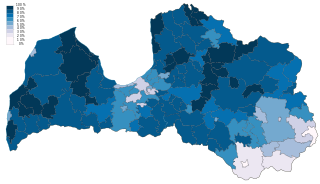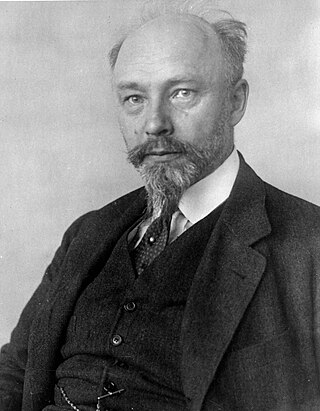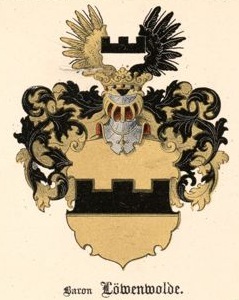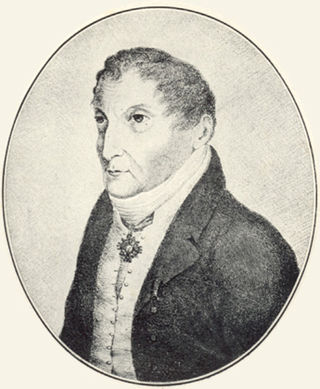Ewald Ammende (3 January 1893 in Pernau, Livonia, Russian Empire - 15 April 1936 in Peking, China) was an Estonian journalist, human rights activist and politician of Baltic German origin.
Contents

Ewald Ammende (3 January 1893 in Pernau, Livonia, Russian Empire - 15 April 1936 in Peking, China) was an Estonian journalist, human rights activist and politician of Baltic German origin.

Ewald Ammende came from a wealthy, influential and long-established merchant family in Livonia. After attending high school in Pernau, from 1910 he studied commerce at the Polytechnic in Riga, economics in Cologne and in Tübingen, and received his doctorate in political science at the Christian-Albrecht University in Kiel.
During the First World War, he worked in the catering business for cities in southern Russia. Following the division of the historical region of Livonia into Estonia and Latvia, Ammende began to campaign for national minorities in the international politics. From 1919 to 1922 he worked as an editor and publishing director at the "Rigasche Rundschau" (Riga Review), where he cooperated with another famous defender of ethnic minorities Paul Schiemann. As co-founder of the Association of German Minorities in Europe, Ammende played a key role in the creation of the "Law on the Cultural Autonomy of Minorities in Estonia" in 1925. In the same year minority representatives from different countries elected him General Secretary of the Congress of European Nationalities (ENK).
He became a strong advocate of ethnic minority right and established an umbrella organization to represent ethnic minority organizations (not only those of ethnic Germans). Ammende assumed that a solution of the national questions would not be feasible by way of irredentism and therefore sought a balance between interests of ethnic groups and nation states on the basis of mutual recognition. In his function as secretary-general of the ENK, he was instrumental in assisting the Jewish associations in submission of the Bernheim petition, which discredited him to the National Socialists. At the same time he came into conflict with the US and the Soviet government because of various aid actions and campaigns of the ENK.
Ewald Ammende was also honorary director of the "Interconfessional and transnational relief organization of his Eminence Cardinal Archbishop of Vienna". [1] He was in close contact with Cardinal Theodor Innitzer, who helped him in publishing his most famous book Muss Russland hungern? Menschen und Völkerschicksale in der Sowjetunion ("Must Russia starve? Destinies of People and Peoples in the USSR"). The word "Russia" in the book title, as was common in those years, referred to USSR in general, although the book covered mostly events in Ukraine and Kuban (West Caucasus). The book stirred much controversy because of its contemporary description of the Soviet famine (currently known as Holodomor [ citation needed ]). Ammende also discussed in his book systematic oppression of various minorities in Ukraine, including the Poles, Magyars, Romanians, Jews, Belarusians and Crimean Germans. Although Ewald Ammende's rejection of the National Socialists was already known at the time of publication [ citation needed ], the Soviet authorities accused the ENK that the book was promoting the National Socialist propaganda. This misleading representation took over in the post-war period, among other East German historians, all the way to the modern research literature. Some historians go so far as to label the entire international campaign of the ENK on the famine awareness as part of the anti-Comintern policy of the Nazi regime [ citation needed ] . Ammende used in his book uncredited photos made by Alexander Wienerberger during his work in Kharkiv in 1933; these photos are currently well known and were reprinted on many occasions. [2]
Ewald Ammende died on April 15, 1936, under obscure circumstances in Beijing, where he wanted to meet with representatives of Jewish minorities from Valdgeym (Jewish National District in Far East). It is only clear that he died in the German Hospital in Beijing. Obituaries appeared in many European newspapers, in which the details of the cause of death ranged from murder, suicide, heart attack, stroke up to the sugar shock (which is currently considered a possible reason, due to family history of the same disease). After his death, his brother, and his right-hand man, Erich Ammende, took over the management of the ENK as an interim charge. He survived his brother by only seven months and died in Vienna. [3] [4]
He was buried in Alevi Cemetery in Pärnu, Estonia.

The Latvian language, also known as Lettish, is an Eastern Baltic language belonging to the Baltic branch of the Indo-European language family, spoken in the Baltic region. It is the language of Latvians and the official language of Latvia as well as one of the official languages of the European Union. There are about 1.2 million native Latvian speakers in Latvia and 100,000 abroad. Altogether, 2 million, or 80% of the population of Latvia, spoke Latvian in the 2000s, before the total number of inhabitants of Latvia slipped to less than 1.9 million in 2022. Of those, around 1.16 million or 62% of Latvia's population used it as their primary language at home, though excluding the Latgale region it is spoken as a native language in villages and towns by over 90% of the population.

Baltic Germans were ethnic German inhabitants of the eastern shores of the Baltic Sea, in what today are Estonia and Latvia. Since their coerced resettlement in 1939, Baltic Germans have markedly declined as a geographically determined ethnic group. However, it is estimated that several thousand people with some form of (Baltic) German identity still reside in Latvia and Estonia.

Pärnu is the fourth largest city in Estonia and third in terms of the ethnic Estonian population. Situated in southwest Estonia, Pärnu is located 128 kilometres (80 mi) south of the Estonian capital, Tallinn, and 176 kilometres (109 mi) west of Estonia's second largest city, Tartu. The city sits off the coast of Pärnu Bay, an inlet of the Gulf of Riga, which is a part of the Baltic Sea. In the city, the Pärnu River drains into the Gulf of Riga.

The Livonian Order was an autonomous branch of the Teutonic Order, formed in 1237. From 1435 to 1561 it was a member of the Livonian Confederation.

The Livonian War (1558–1583) was fought for control of Old Livonia. The Tsardom of Russia faced a varying coalition of the Dano-Norwegian Realm, the Kingdom of Sweden, and the Union of the Grand Duchy of Lithuania and the Kingdom of Poland.

The Governorate of Livonia, also known as the Livonia Governorate, was a province (guberniya) of the Russian Empire and the Baltic Governorate-General until 1876. The Governorate of Livonia bordered the Governorate of Estonia to the north, the Saint Petersburg and Pskov Governorates to the east, the Courland Governorate to the south, and the Gulf of Riga to the west. In 1897, the population of the governorate was 1,299,365, and it had an area of 47,030.87 square kilometres (18,158.72 sq mi). The administrative centre of the governorate was the Baltic Sea port of Riga. It roughly corresponded to most of the modern Vidzeme Region of Latvia and southern Estonia.

Gustav Fabergé was a Russian jeweller of Baltic German origin and father of Peter Carl Fabergé, maker of Fabergé eggs. He established his own business in Saint Petersburg, which his son inherited.

Hermann Alexander Graf von Keyserling was a Baltic German philosopher from the Keyserlingk family. His grandfather, Alexander von Keyserling, was a notable geologist of Imperial Russia.

Garlieb Helwig Merkel was a Baltic German writer and activist and an early Estophile and Lettophile.
Riga Governorate, also known as the Province of Riga, was an administrative division of the Russian Empire in modern southern Estonia and northern Latvia from 1713 to 1783. The Province of Riga was formed to replace the Eastern Provinces of the Kingdom of Sweden in 1713. After the conquest of the regions of Ingermanland, Livonia and Estonia by Sweden in the Great Northern War in 1710. In 1713, the Provinces of Riga and Tallinn were separated into separate administrative units, and in 1713–1714, the organization and management of the Province of Riga were also defined.

Estonia was under military occupation by the German Empire during the later stages of the First World War. On 11–21 October 1917, the Imperial German Army occupied the West Estonian archipelago, including the larger islands of Saaremaa (Ösel), Hiiumaa (Dagö), and Muhu (Moon).

Gabriele Krone-Schmalz is a German broadcast journalist and author.

With the Capitulation of Estonia and Livonia in 1710 the Swedish dominions Estonia and Livonia were integrated into the Russian Empire following their conquest during the Great Northern War. The Livonian nobility and the city of Riga capitulated on 4 July (O.S.) / 15 July 1710 (N.S.), Pernau (Pärnu) in August, and the Estonian nobility and the city of Reval (Tallinn) on 29 September (O.S.) / 10 October (N.S.). Russia left the local institutions in place and confirmed the traditional privileges of the German nobles and burghers as was established in Privilegium Sigismundi Augusti, especially with respect to the Protestant faith. The land reform of the so-called reduction which had been introduced by the Swedish king Charles XI, and transformed many serfs to subjects of the Crown, was reversed.

Gerhard Johann von Löwenwolde was a Baltic German Estonian knight. In the 1690s, he announced support of Johann Reinhold von Patkul's lobbyism against Swedish absolutist threats to Baltic noble privileges, while also working with the Swedish authorities in Estonia. He served in the Swedish army, and in 1697 was promoted major of the Swedish garrison in Riga. During the Great Northern War, he first served Augustus the Strong of Saxe-Poland–Lithuania, and after taking an ambiguous stance towards August and Peter the Great of Russia entered Peter's service after the Capitulation of Estonia and Livonia in 1710. He served as Peter the Great's plenipotentiary of Livonia during the same year, and held that office until 1713, when he became hofmeister in the service of Princess Charlotte of Brunswick-Wolfenbüttel, wife of Peter's son Alexei Petrovich, Tsarevich of Russia.
The Treaty of Mozhaysk was a Danish-Russian treaty concluded on 7 August 1562, during the Livonian War. While not an actual alliance, the treaty confirmed the amicable Dano-Russian relation and obliged the parties to not support the other parties in the war, to respect each other's claims in Old Livonia, and to grant free passage to each other's merchants.

Count Ludwig August Mellin was a Baltic German politician, cartographer, writer and publicist. He is best known for creating the first professional atlas visualizing Livonia, the Atlas von Liefland, oder von den beyden Gouvernementern u. Herzogthümern Lief- und Ehstland, und der Provinz Oesel in 1798.

Peeter Järvelaid is an Estonian legal scholar and historian. Järvelaid is a professor in the University of Tallinn. He has developed semiotic and personality-centered research direction, writing hundreds of articles mostly about the European and Estonian legal history and education, published in Estonian, English, German, French, Russian, Latvian, Finnish, Lithuanian and Swedish. Since 2006 his studies have been increasingly concentrated on the international relations in the 20th century, which among others has required intensive archival researches in German and Polish archives. Since 2012 Järvelaid has placed his research emphasis on the German diplomatic missions, with a specific interest in German diplomatic representation in Tallinn.

Karl Eduard von Napiersky was a Latvian clergyman and historian.

Karin Kneissl is an Austrian diplomat, journalist, and independent politician, having served as Minister of Foreign Affairs between 2017 and 2019. Prior to assuming her government position, she was a lecturer.
Alexander Wienerberger was an Austrian chemical engineer and right wing nationalist, who worked for 19 years in the chemical industry of the Soviet Union. While he worked in Kharkiv, he created a series of photographs of the Holodomor of 1932–1933, which serves as photographic evidence of the mass starvation of the Soviet Ukrainian people at that time. Alexander also spent time fighting for the Nazis but was denied full membership due to his Jewish heritage.